Moval & Roval Diamonds: Antique Charm, Uncommon Beauty
If you’re after a diamond that feels truly one-of-a-kind, with a sparkle that tells its own story and a shape that stands out from the crowd, Moval and Roval cuts are a dream. They blend the best of classic shapes with a twist of something unexpected. Here’s why we’re so smitten with them.
Now, let’s dive into what makes Moval and Roval diamonds so compelling.
- Moval: Imagine the marquise and the oval had a baby—Moval is the result. It’s a little more elongated than your classic oval, but instead of those sharp marquise points, you get softly rounded tips. The look is elegant and finger-flattering, with all the drama of an elongated shape but none of the worry about delicate points. We love how it sits on the hand—so graceful, so striking.
- Roval: Think of a round diamond that’s just a little bit rebellious—a touch of oval sneaking in. At first glance, it looks like a classic round, but look closer and you’ll spot those slightly stretched proportions. That hint of off-round gives Rovals a cozy warmth and a personality that perfect symmetry just can’t match.
You won’t find Moval or Roval listed alongside emeralds or cushions in the usual cut guides, but they have a special place in the world of old diamonds. Before shapes were strictly defined, cutters followed the rough and their own eye, so many antique stones that get called “round” or “oval” today actually have those deliciously in-between proportions—Moval or Roval in spirit, if not in name.
The History & Context
To appreciate Moval & Roval fully, it helps to see them in the larger arc of diamond cut history:
- Diamond cutting is centuries old. Early cuts like the table cut, then rose cut, gave way to hands‐on cuts in the 18th and 19th centuries.
- The Old Mine Cut and Old European Cut (late 1700s through early 1900s) are historic ancestors to modern round/brilliant cuts. These stones often had imperfect symmetry, larger culets, and high crowns—features that Moval / Roval cuts echo in spirit.
- As diamond cutting got more precise in the 20th century, the focus shifted to perfect symmetry and maximum sparkle, and many of those quirky old cuts were lost or recut. But now, there’s a real hunger for stones with soul—diamonds that feel like they have a story. Moval and Roval shapes are back in the spotlight, loved for their character and that unmistakable not-from-a-factory vibe.
Why Moval & Roval Feel Special (What Makes Them Shine)
Individual character: Every Moval and Roval has its own little quirks—a Moval with dainty tips, a Roval that’s just a touch off-round. No two are ever quite the same, and that’s the magic.
Finger-flattering proportions: Movals have that lovely elongation that makes fingers look extra elegant, while Rovals are just plump enough to be universally flattering and oh-so-comfortable to wear.
Vintage appeal: Antique stones weren’t chasing perfect geometry—they were all about catching the light, glowing in candlelit rooms, and bringing a little romance to the hand. Moval and Roval shapes capture that dreamy, old-world charm we can’t get enough of.
Practicality: With no sharp points to worry about, Movals are less likely to snag or chip, especially when set securely. They’re as easy to wear as they are beautiful.
Famous Diamonds / Trends: Where Movals & Rovals Touch the Spotlight
Here’s where it gets interesting: while we haven’t (yet) unearthed many named historic diamonds explicitly called Moval or Roval, these cuts are part of celebrities’ engagement ring stories, vintage collector’s items, and modern trends.
- Oval cuts are certainly more widely known in the celebrity universe. For example:
- Georgina Rodríguez, the fiancée of football star Cristiano Ronaldo, received a 30-carat oval-cut diamond engagement ring. This ring, notable for its significant carat size and elegant oval cut, became one of the most talked-about celebrity engagement rings of 2025.
- Taylor Swift’s recent ring with Travis Kelce features an old mine cut diamond. Old mine cuts, with their high crowns and hand-cut style, share aesthetic qualities with Moval and Roval shapes, such as an antique look and a unique handmade appearance. This style contributed to a renewed interest in historic diamond cuts among celebrities.
- At antique fairs and vintage jewelry shows, you’ll spot “round” or “oval” stones from the 1800s and early 1900s that don’t quite fit today’s standards—they’re often what we’d now call Rovals or Movals. There’s a movement toward stones with history, character, and those perfectly imperfect, hand-cut quirks. That’s why Movals and Rovals have such a devoted following.
- There’s also the example of Wittelsbach-Graff Diamond, which is described as “antique oval stellar brilliant.” While not “Moval” by name, its shape shows how historic oval/round hybrids can carry prestige and narrative.
Favorite Moval/Roval Cuts in Our Collection
-
2.17ctw Moval Cut Diamond Ring, GIA K VVS2
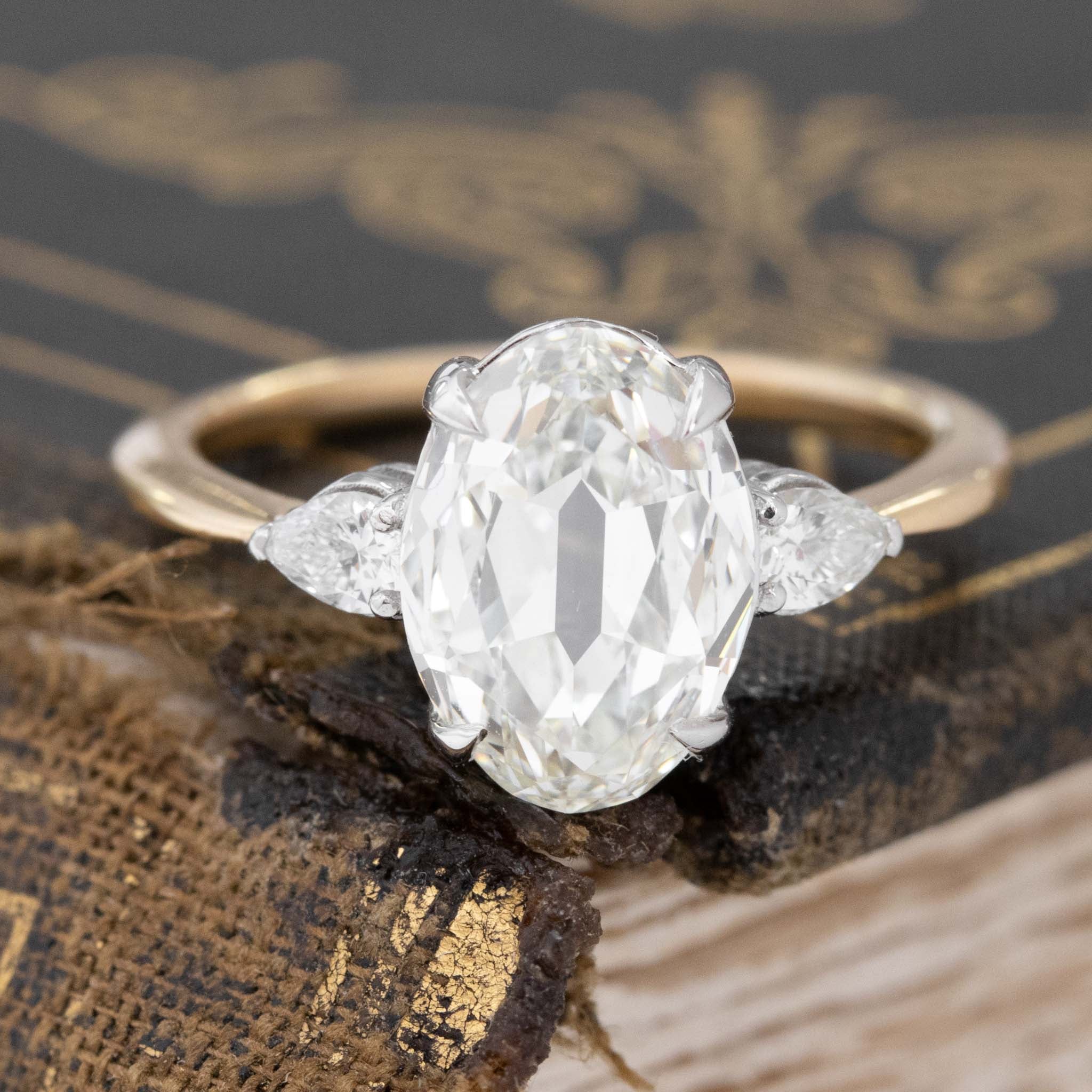
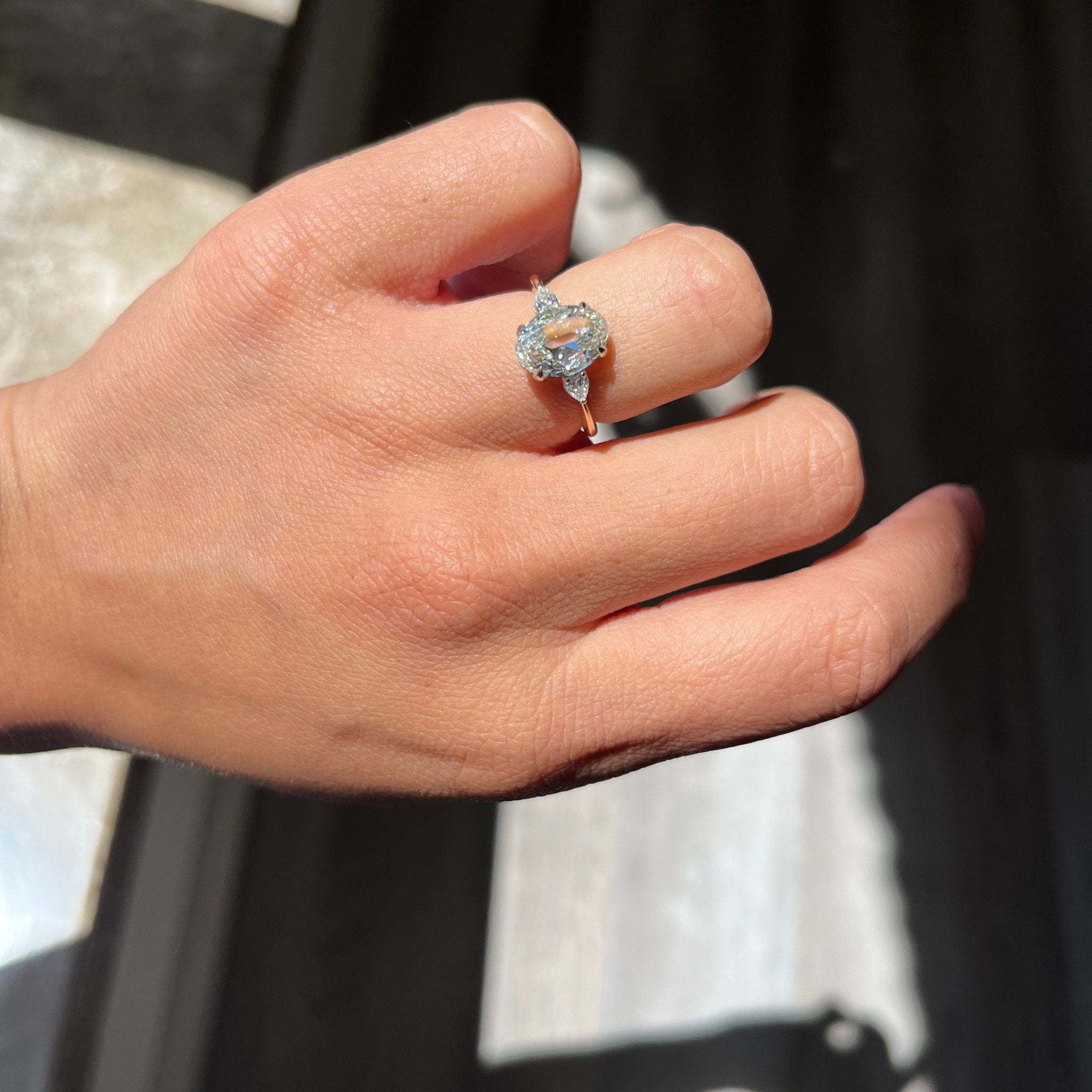
2.17ctw Moval Cut Diamond Ring, GIA K VVS2
- Regular price
- $17,860.00 USD
- Sale price
- $17,860.00 USD
- Regular price
-
$19,000.00 USD
-
1.69ct Antique Moval Cut Diamond Solitaire
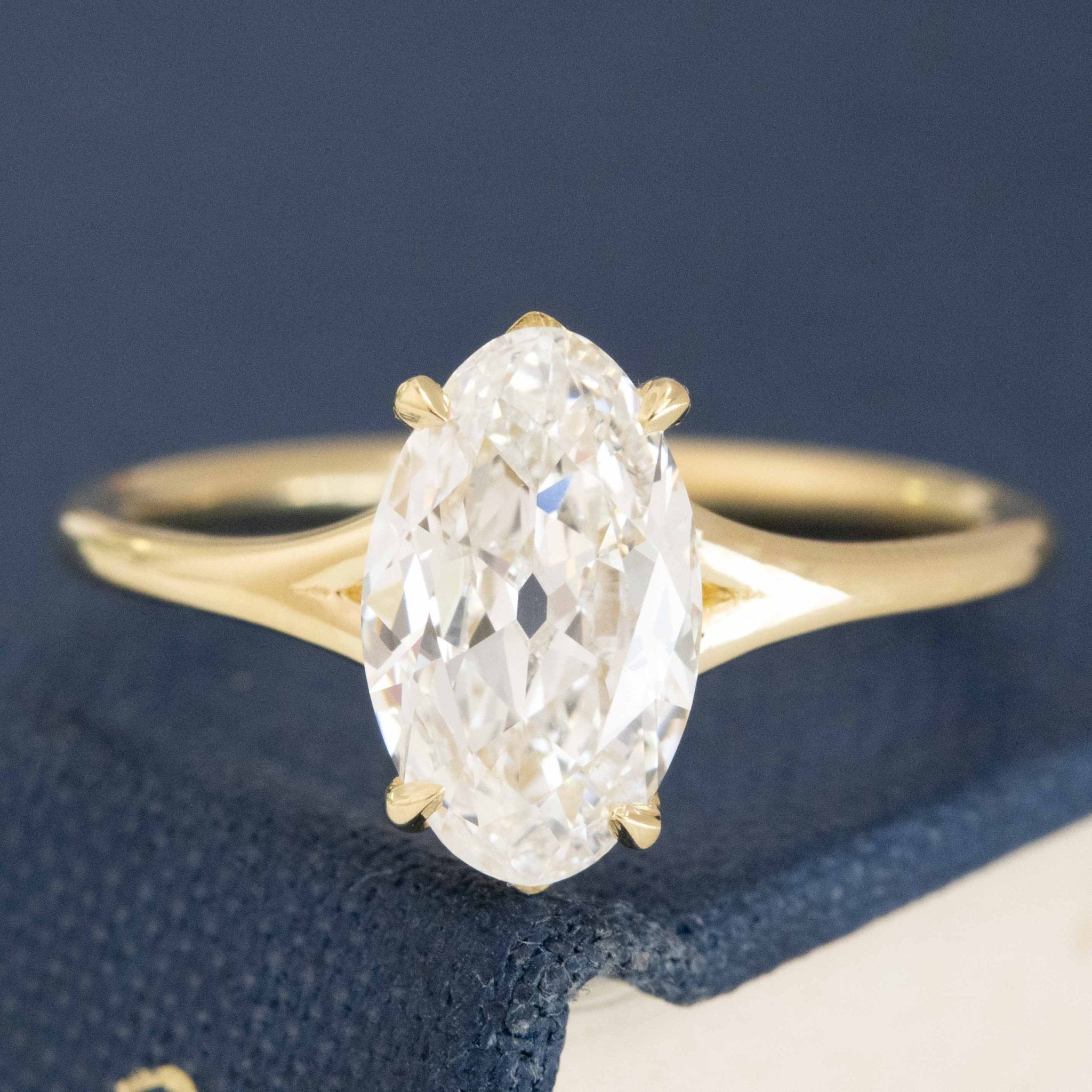
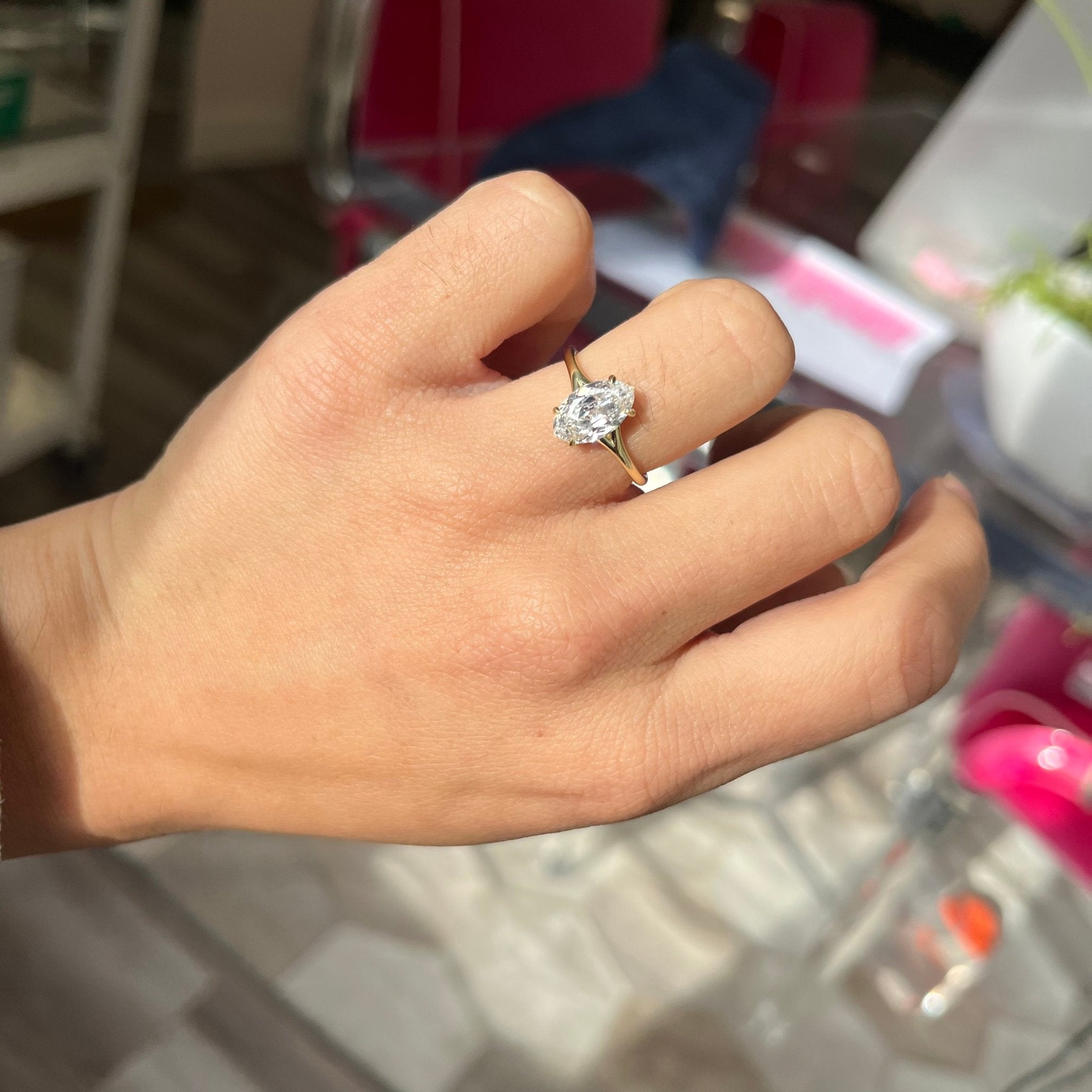
1.69ct Antique Moval Cut Diamond Solitaire
- Regular price
- $21,150.00 USD
- Sale price
- $21,150.00 USD
- Regular price
-
$22,500.00 USD
-
1.69ct Moval Cut Diamond, GIA E VVS1
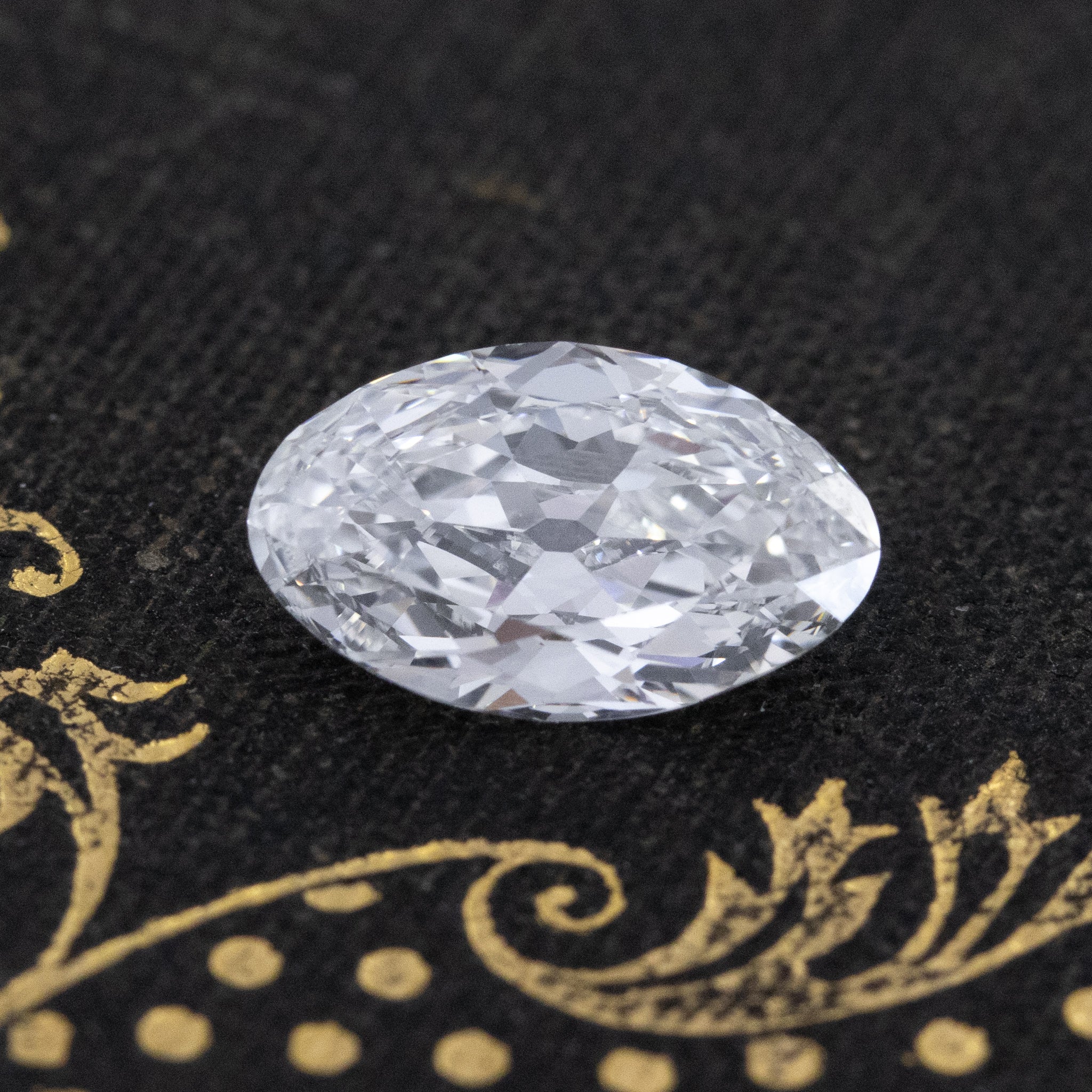
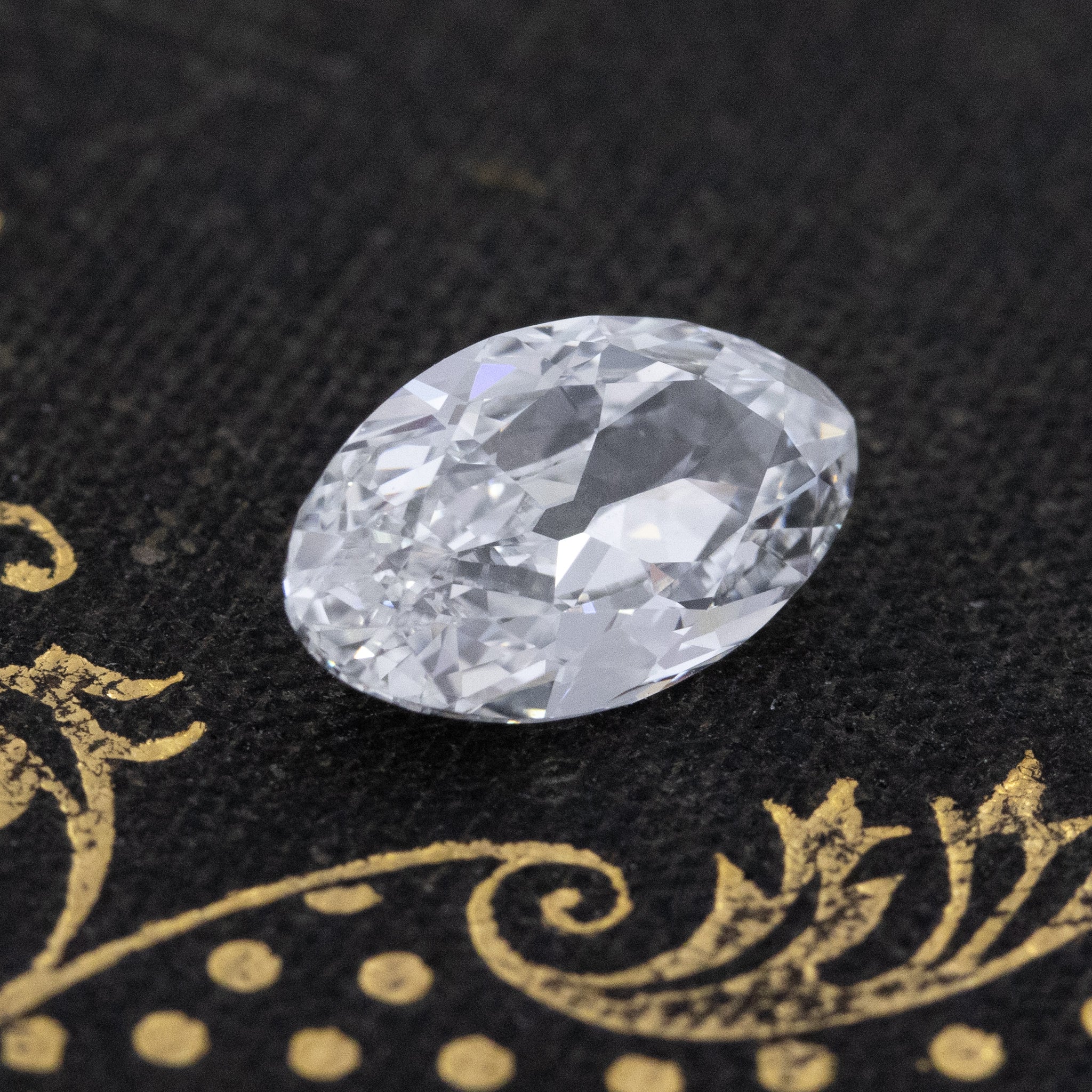
1.69ct Moval Cut Diamond, GIA E VVS1
- Regular price
- $20,445.00 USD
- Sale price
- $20,445.00 USD
- Regular price
-
$21,750.00 USD








